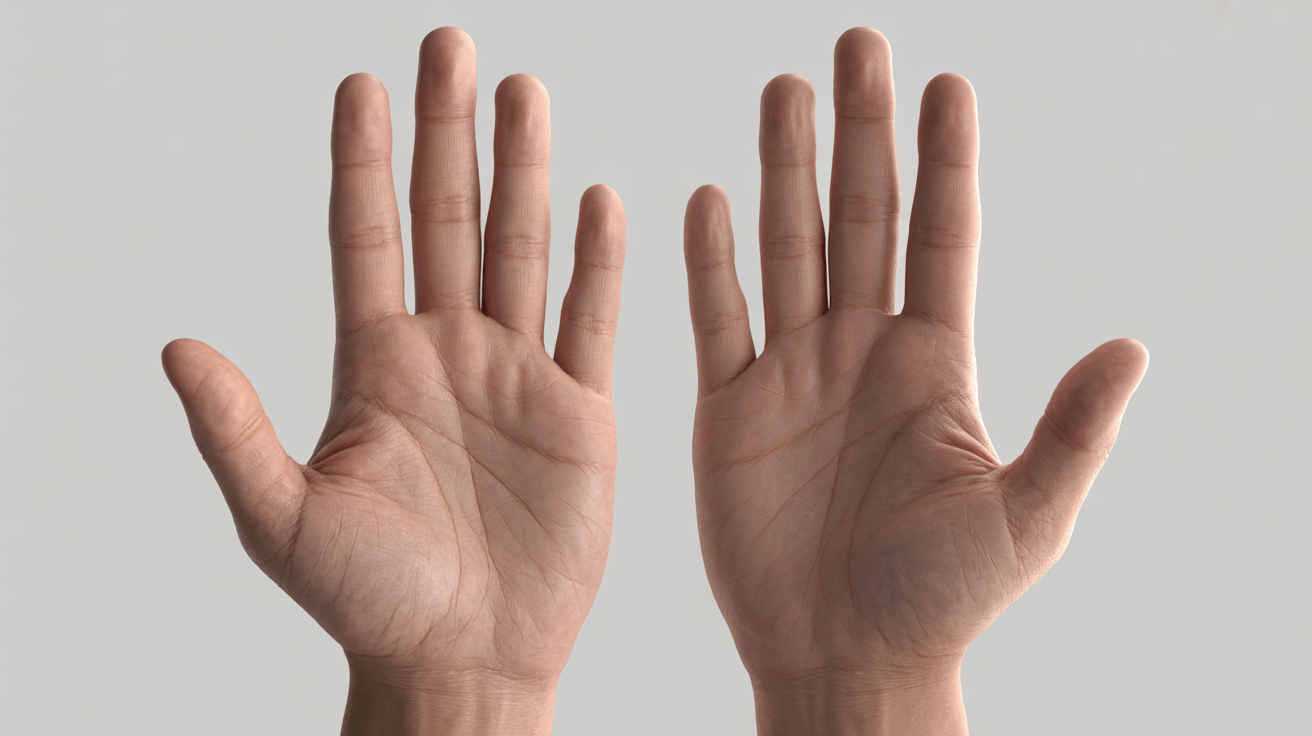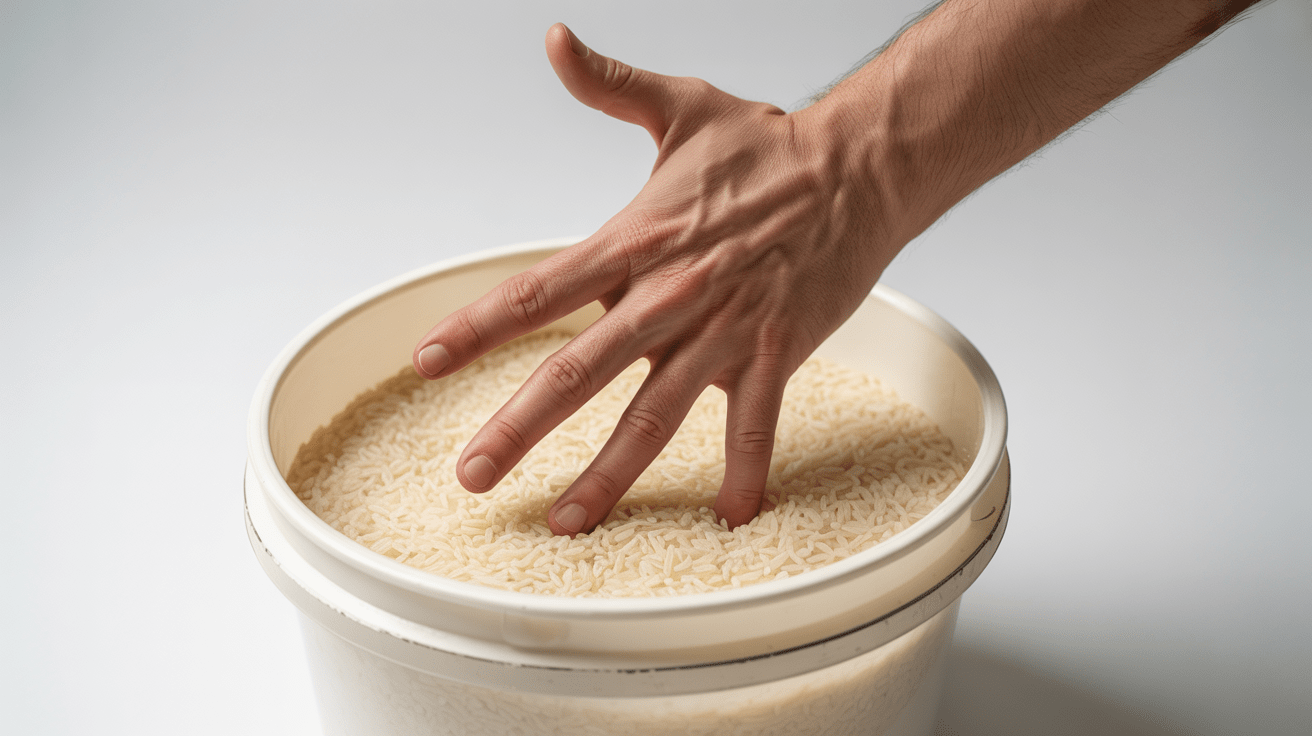How to Strengthen Your Weak Hand: Proven Exercises for Better Balance
Have you ever noticed how awkward it feels to brush your teeth, write a note, or open a jar with your non-dominant hand? That clumsiness isn't just inconvenient—it represents an imbalance that could be limiting your potential. Whether you're an athlete looking to gain a competitive edge, a musician seeking greater dexterity, recovering from an injury, or simply wanting to improve your brain health, strengthening your weak hand offers remarkable benefits for coordination, neural pathways, and overall function.
In this comprehensive guide, we'll explore effective exercises and practical strategies to transform your weaker hand from a liability into an asset. With consistent practice and the right approach, you'll develop greater symmetry, improved coordination, and enhanced performance in daily activities and specialized skills alike.
Why Strengthening Your Non-Dominant Hand Matters

Most of us naturally favor one hand over the other, with approximately 90% of the population being right-handed. This preference develops early in life and becomes deeply ingrained in our motor patterns. However, this dominance creates an imbalance that can have several consequences:
Physical Benefits
- Improved bilateral coordination and dexterity
- Enhanced fine motor control in both hands
- Greater grip strength and endurance
- Reduced risk of repetitive strain injuries
- Better recovery from hand or wrist injuries
Cognitive Benefits
- Stimulation of new neural pathways
- Enhanced brain connectivity between hemispheres
- Improved problem-solving abilities
- Potential protection against cognitive decline
- Greater adaptability in motor learning
For athletes, musicians, artists, and professionals who rely on manual dexterity, developing the non-dominant hand can significantly improve performance. Even for everyday activities, having balanced hand strength provides greater versatility and reduces the strain on your dominant hand.
Essential Warm-Up Exercises for Hand Strengthening
Before diving into more intensive strengthening exercises, it's crucial to properly warm up the muscles, tendons, and joints in your hands and wrists. This increases blood flow, improves flexibility, and significantly reduces the risk of injury during your training.

1. Wrist Circles
This simple movement helps lubricate the wrist joint and prepares the surrounding muscles for more intensive work.
- Extend your arm in front of you with your palm facing down
- Make 10 slow circles with your wrist in a clockwise direction
- Reverse and make 10 circles counterclockwise
- Repeat with your other hand for balance
2. Finger Stretches
These stretches help increase finger flexibility and prepare the small muscles of the hand.
- Extend your arm with your palm facing up
- Gently pull each finger back toward your wrist, one at a time
- Hold each stretch for 5 seconds
- Next, spread your fingers wide apart, hold for 5 seconds, then relax
- Repeat this sequence 3 times
3. Wrist Flexion and Extension
This exercise warms up the forearm muscles that control your wrist movement.
- Hold your arm out with palm facing down
- Gently bend your wrist downward as far as comfortable
- Hold for 3 seconds, then bend upward
- Perform 10 repetitions of this up-and-down movement
Pro Tip: Perform these warm-ups daily, even on days when you're not doing your full hand strengthening routine. This maintains flexibility and can help prevent stiffness in your hands and wrists.
Core Exercises to Strengthen Your Weak Hand
Now that your hands are properly warmed up, let's dive into the core strengthening exercises. These movements target different muscle groups in your hands, wrists, and forearms to build comprehensive strength and dexterity.

1. Rice Bucket Digs
Targets: Intrinsic hand muscles, finger extensors and flexors, wrist stabilizers
This exercise provides resistance in multiple directions and is a favorite among athletes and musicians for developing hand strength and endurance.
- Fill a large bucket or container with uncooked rice (about 10-15 pounds)
- Submerge your weak hand into the rice up to your wrist
- Perform the following movements for 30 seconds each:
- Finger pinches: Pinch and grab rice with all fingers
- Finger spreads: Spread fingers wide against the resistance
- Wrist rotations: Rotate your hand while keeping it submerged
- Complete 3 sets with 30-second breaks between movements
Pro Tip: Start with just 10-15 seconds per movement if this feels challenging. The resistance of the rice can be surprisingly intense for beginners.
Essential Tool for Hand Strengthening
A dedicated rice bucket is an affordable and effective tool for developing hand strength. Use a container that allows your entire hand to be submerged with room for movement.
Shop Rice Bucket Kits
2. Towel Wringing
Targets: Grip strength, wrist rotators, forearm muscles
This functional exercise mimics real-world movements while strengthening the hand and forearm.
- Soak a small hand towel in water until thoroughly wet
- Grip the towel with both hands, placing your weaker hand in the position that requires more force (usually the twisting motion)
- Wring the towel by twisting your hands in opposite directions
- Focus on generating force with your weaker hand
- Perform 3 sets of 10 wringing motions
Common Mistake: Avoid using only your dominant hand to generate force. Concentrate on engaging your weaker hand throughout the movement.

3. Finger Resistance Band Exercises
Targets: Finger extensors, hand intrinsics, finger abductors
These exercises specifically target the often-neglected extensor muscles that open your hand and provide balance to your grip strength.
- Place a rubber band around all five fingertips of your weak hand
- Spread your fingers apart against the resistance of the band
- Hold the spread position for 3 seconds, then slowly release
- Perform three sets of 15 repetitions
- For an additional challenge, use thicker bands or perform the exercise with just two fingers at a time.
Pro Tip: You can purchase specialized hand therapy bands, but regular office rubber bands work well for beginners. Stack multiple bands for increased resistance as you progress.
Upgrade Your Hand Training
Professional-grade finger resistance bands provide consistent tension and are designed specifically for hand rehabilitation and strengthening.
Get Finger Resistance Bands
4. Therapy Putty Exercises
Targets: Finger strength, thumb opposition, intrinsic hand muscles
Therapy putty provides adjustable resistance and allows for a wide variety of movements to develop comprehensive hand strength.
- Obtain therapy putty in appropriate resistance (start with soft/medium if you're a beginner)
- Perform these exercises for 30 seconds each:
- Full hand squeeze: Press the putty in your palm, squeezing with all fingers
- Finger pinches: Pinch small pieces between the thumb and each finger
- Finger presses: Press each fingertip into the putty
- Putty rolling: Roll the putty into a ball using just your fingertips
- Complete 3 sets with 30-second breaks between exercises
Common Mistake: Don't rush through the movements. Slow, controlled actions with proper form will develop strength more effectively than quick, sloppy repetitions.
5. Grip Strengthener Training
Targets: Overall grip strength, finger flexors, forearm muscles
A dedicated grip strengthener device enables progressive resistance training that directly translates into improved hand strength.
- Select a grip strengthener with adjustable resistance or appropriate to your current strength level.
- Hold the device in your weak hand with your wrist straight
- Squeeze the handles together completely, then slowly release
- Perform 3 sets of 10-15 repetitions
- As you progress, increase either the resistance or the number of repetitions
Pro Tip: To target different muscles, vary your grip position on the handles or try squeezing with individual fingers.
Progressive Hand Strengthening
An adjustable grip strengthener allows you to increase resistance as your hand gets stronger, providing continuous challenge and improvement.
Shop Adjustable Grip Strengtheners6. Finger Isolation Exercises
Targets: Individual finger control, hand coordination, intrinsic muscles
These exercises develop the fine motor control necessary for precise movements and coordination.
- Place your weak hand flat on a table, palm down.
- Lift one finger at a time while keeping the others pressed against the surface
- Hold each finger up for 3 seconds before lowering it
- Progress to more complex patterns:
- Tap each finger to your thumb in sequence
- Perform "piano playing" movements on the table
- Create finger combinations (index and ring finger together, etc.)
- Practice for 5 minutes daily
Common Mistake: Many people unconsciously lift adjacent fingers when attempting isolation. Use your dominant hand to gently hold down the other fingers, if needed, when first starting.

7. Ball Squeeze Progression
Targets: Grip strength, finger flexors, hand endurance
This simple yet effective exercise builds overall hand strength and can be performed almost anywhere.
- Select an appropriate ball (stress ball, tennis ball, or therapy ball)
- Hold the ball in your weak hand
- Squeeze the ball as hard as you can for 5 seconds, then release
- Perform 3 sets of 10-15 repetitions
- Progress by:
- Using firmer balls as you get stronger
- Squeezing with individual fingers
- Holding the squeeze for longer durations
Pro Tip: Keep a stress ball at your desk or in your car to practice during downtime throughout the day.

Integrating Weak Hand Training Into Daily Life
While dedicated exercises are important, one of the most effective ways to strengthen your non-dominant hand is to incorporate it into your everyday activities. This provides consistent practice throughout the day without requiring extra time.

Morning Routine Activities
- Brushing teeth: Switch to your non-dominant hand for a coordination challenge
- Hair brushing/combing: Use your weak hand for improved dexterity
- Applying personal care products: Open containers and apply with your non-dominant hand
- Getting dressed: Button shirts, tie shoes, and fasten jewelry with your weak hand
Throughout the Day
- Eating: Use utensils with your non-dominant hand during one meal daily
- Opening doors: Use your weak hand for doorknobs and handles
- Carrying items: Hold bags, groceries, and other objects with your non-dominant hand
- Phone use: Hold and operate your phone with your weak hand when possible
Work and Leisure Integration
- Computer mouse: Switch your mouse to the opposite side for an hour each day
- Writing practice: Spend 5 minutes daily writing or drawing with your non-dominant hand
- Kitchen tasks: Stir, chop (carefully!), and handle kitchen tools with your weak hand
- Hobbies: Incorporate your non-dominant hand into crafts, sports, or other leisure activities
"The key to developing hand strength isn't just intense exercise—it's consistent, daily use. Your brain forms new neural pathways through repetition, so frequent practice with your non-dominant hand throughout the day is often more effective than occasional intense training sessions."
Challenge Yourself: Try a "Weak Hand Day" once a week, where you commit to using your non-dominant hand for as many activities as safely possible throughout the entire day.
Safety Guidelines and Progression Tips
As with any training program, proper progression and attention to safety are crucial for success. Here's how to strengthen your weak hand effectively while avoiding injury or excessive strain.
Listen to Your Body
Pain is different from discomfort. While some muscle fatigue is normal during and after exercises, sharp or persistent pain is a warning sign.
- Stop any exercise that causes sharp or shooting pain
- Distinguish between productive muscle fatigue and potential injury
- Allow 48 hours of recovery for any exercise that causes significant soreness
- Consult a healthcare professional if pain persists or worsens
Proper Form and Technique
Correct form is essential for effective strengthening and injury prevention.
- Maintain a neutral wrist position during exercises (not excessively bent)
- Focus on the quality of movement rather than the quantity
- Perform exercises in front of a mirror initially to monitor form
- Breathe normally throughout exercises (avoid holding your breath)
Smart Progression
Gradual progression is key to continued improvement without overtraining.
| Training Phase | Duration | Focus | Progression Strategy |
| Beginner | Weeks 1-2 | Form and technique | Master proper movement patterns with minimal resistance |
| Early Development | Weeks 3-6 | Building baseline strength | Increase repetitions before increasing resistance |
| Intermediate | Weeks 7-12 | Strength and endurance | Gradually increase resistance while maintaining form |
| Advanced | Months 3-6 | Functional strength | Incorporate complex movements and task-specific training |
Important Safety Note: If you have existing hand, wrist, or arm injuries, arthritis, carpal tunnel syndrome, or other medical conditions affecting your hands, consult with a healthcare professional before beginning any hand strengthening program.
Tracking Your Progress
Measuring your improvement provides motivation and helps you adjust your training program as needed. Here are effective ways to track your weak hand development:

Objective Measurements
- Grip strength: Use a hand dynamometer if available, or track the resistance level on your grip strengthener
- Endurance: Record how long you can maintain a specific grip or how many repetitions you can perform
- Dexterity: How long it take to complete precision tasks like buttoning a shirt or threading a needle
- Functional tests: Track your ability to perform specific activities that were previously challenging
Keeping a Training Journal
A dedicated journal helps you see patterns and progress over time:
- Record which exercises you perform each day
- Note the resistance levels, repetitions, and sets
- Track any discomfort or limitations
- Document milestones and achievements
- Take weekly photos of your hand performing a consistent task to track improvements in form visually
Track Your Progress Effectively
Download our free Hand Strength Training Journal template to systematically track your exercises, measurements, and progress over time.
Download Free Training JournalConclusion: Your Path to Balanced Hand Strength
Strengthening your weak hand is a journey that requires patience, consistency, and proper technique. By following the exercises and strategies outlined in this guide, you'll develop greater symmetry between your hands, improve your overall dexterity, and enhance your performance in both everyday tasks and specialized activities.
Remember these key principles as you work to strengthen your weak hand:
- Consistency trumps intensity — Regular, moderate practice yields better results than occasional intense sessions
- Integration is essential — Incorporate your non-dominant hand into daily activities for continuous improvement
- Progress is personal — Your rate of improvement will depend on your starting point, age, and individual factors
- Patience pays off — Neural adaptation takes time, but the brain's plasticity ensures that consistent practice will yield results.
Whether you're recovering from an injury, seeking to prevent one, or simply wanting to expand your capabilities, the journey to strengthen your weak hand offers benefits that extend far beyond just increased grip strength. You're creating new neural pathways, improving brain connectivity, and developing greater overall coordination that will serve you well in countless ways.
Start today with just one exercise or daily activity switch, and gradually build your routine. Your future self—with two capable, strong hands—will thank you for the effort.
Ready to Take Your Hand Training to the Next Level?
Get our complete hand strengthening kit with therapy putty, finger resistance bands, a grip strengthener, and a comprehensive exercise guide.
Shop Complete Hand Training KitFrequently Asked Questions About Hand Strengthening
How long does it take to see results from hand strengthening exercises?
Most people notice initial improvements in coordination within 2-3 weeks of consistent practice. Significant strength gains typically become apparent after 4-6 weeks of regular training. However, developing true ambidexterity or advanced skills with your non-dominant hand can take months or even years of dedicated practice.
Is it normal to feel frustrated when using my non-dominant hand?
Absolutely! Using your non-dominant hand can feel awkward and even childlike at first. This frustration is normal and temporary. Your brain is forming new neural pathways, which takes time and repetition. Start with simpler tasks and gradually progress to more complex ones as your confidence builds.
Can strengthening my weak hand help with recovery from a stroke or injury?
Yes, hand strengthening exercises are commonly used in rehabilitation after strokes, injuries, or surgeries. However, in these cases, it's essential to work with a healthcare professional who can provide a customized program appropriate for your specific condition and stage of recovery.
How often should I train my weak hand?
For optimal results, aim for daily practice. This can include 10-15 minutes of dedicated exercises 3-5 times per week, plus integration of your non-dominant hand into everyday activities. Consistency is more important than duration—even 5 minutes daily is better than an hour once a week.
Will strengthening my non-dominant hand affect my dominant hand's performance?
No, strengthening your non-dominant hand won't diminish your dominant hand's abilities. In fact, research suggests that training your non-dominant hand can lead to neural adaptations that improve coordination in both hands through a process called bilateral transfer.
DISCAIMER
This document is provided for general information purposes only and should not be relied upon as providing legal advice, technical, or specific operational guidance to the reader, whether as to the practices described in the document or the applicable legal requirements and regulations. Percussion Pros.com expressly disclaims any responsibility for liability arising from or related to the use or misuse of any information in this document.





